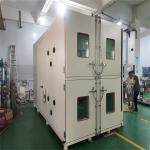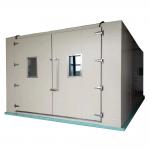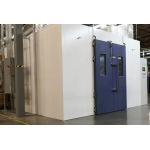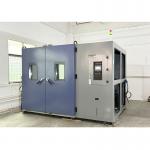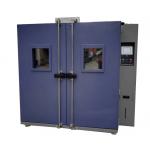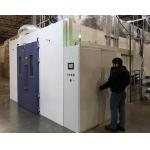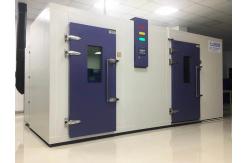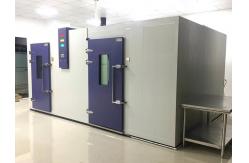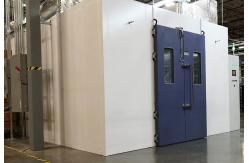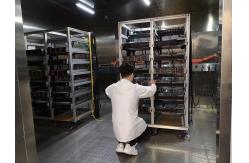In the automotive industry, the quality of the air inside a vehicle
cabin has become a significant concern. The Custom Walk-In
Environmental Test Chambers designed for ISO 12219-1 VOC - Whole
Vehicle testing are at the forefront of ensuring that vehicles meet
the highest standards for interior air quality. This specialized walk-in chamber is dedicated to conducting
comprehensive tests on whole vehicles to measure and analyze
Volatile Organic Compounds (VOCs) as per the ISO 12219-1 standard.
It serves automotive manufacturers, research institutions, and
regulatory bodies. The primary objective is to evaluate the
emission levels of VOCs from various vehicle interior components
such as plastics, upholstery, adhesives, and coatings. By
accurately simulating real-world conditions and following the ISO
standard, manufacturers can identify and mitigate sources of
harmful VOC emissions, enhancing the comfort and health of vehicle
occupants. - Spacious and Controlled Chamber Environment
- The chamber is constructed with a large interior space to
accommodate whole vehicles. The walls are made of high-quality,
inert materials that do not contribute to VOC emissions and provide
excellent insulation. The door is designed with a reliable sealing
mechanism to prevent any external contaminants from entering and to
maintain a stable internal environment. The chamber is equipped
with a powerful ventilation system that can control the air
exchange rate precisely, ensuring accurate sampling and analysis of
VOCs.
- Precision Temperature and Humidity Control
- Temperature Control: Capable of achieving a wide temperature range
from 0°C to 40°C with an accuracy of ±0.5°C. The system utilizes
advanced heating and cooling units, along with multiple temperature
sensors, to ensure uniform temperature distribution throughout the
chamber. This is crucial as temperature can significantly affect
the emission rates of VOCs from vehicle interior materials.
- Humidity Control: The humidity range extends from 30% to 70%
relative humidity, with an accuracy of ±3% RH. A combination of
humidifiers and dehumidifiers, coordinated by a sophisticated
control algorithm, enables precise humidity adjustments. Humidity
levels can impact the adsorption and desorption of VOCs, so
accurate control is essential for reliable testing.
- VOC Sampling and Analysis System
- The chamber is integrated with a state-of-the-art VOC sampling
system. It uses high-quality sorbent tubes or other sampling media
to collect VOCs from the vehicle cabin air. The sampling system is
connected to advanced analytical instruments such as gas
chromatographs - mass spectrometers (GC-MS) or other VOC analyzers.
These instruments can detect and quantify a wide range of VOCs with
extremely high sensitivity and accuracy. The system is designed to
comply with the sampling and analysis procedures specified in the
ISO 12219-1 standard.
- Intuitive Control Panel and Data Acquisition Interface
- The control panel is user-friendly and allows operators to easily
set and adjust test parameters such as temperature, humidity, air
exchange rate, and sampling time. It provides real-time displays of
the current environmental conditions and sampling status. The
chamber is integrated with a comprehensive data acquisition system
that records all relevant test data. This includes temperature and
humidity histories, VOC concentration data over time, and any other
parameters related to the test. The data can be stored in a
built-in memory or exported to external storage devices for further
analysis. The system can also generate detailed test reports in
various formats.
- Safety Features and Alarms
- Over-temperature and over-humidity protection systems are in place
to prevent damage to the chamber and the vehicle being tested.
Emergency stop buttons are easily accessible. Alarms are triggered
for abnormal temperature fluctuations, humidity levels, ventilation
system malfunctions, or any other equipment failures. The chamber
is also equipped with gas detection sensors to monitor the levels
of any potentially harmful gases that may be released during the
test, ensuring the safety of operators.
- Temperature Range and Accuracy
|
